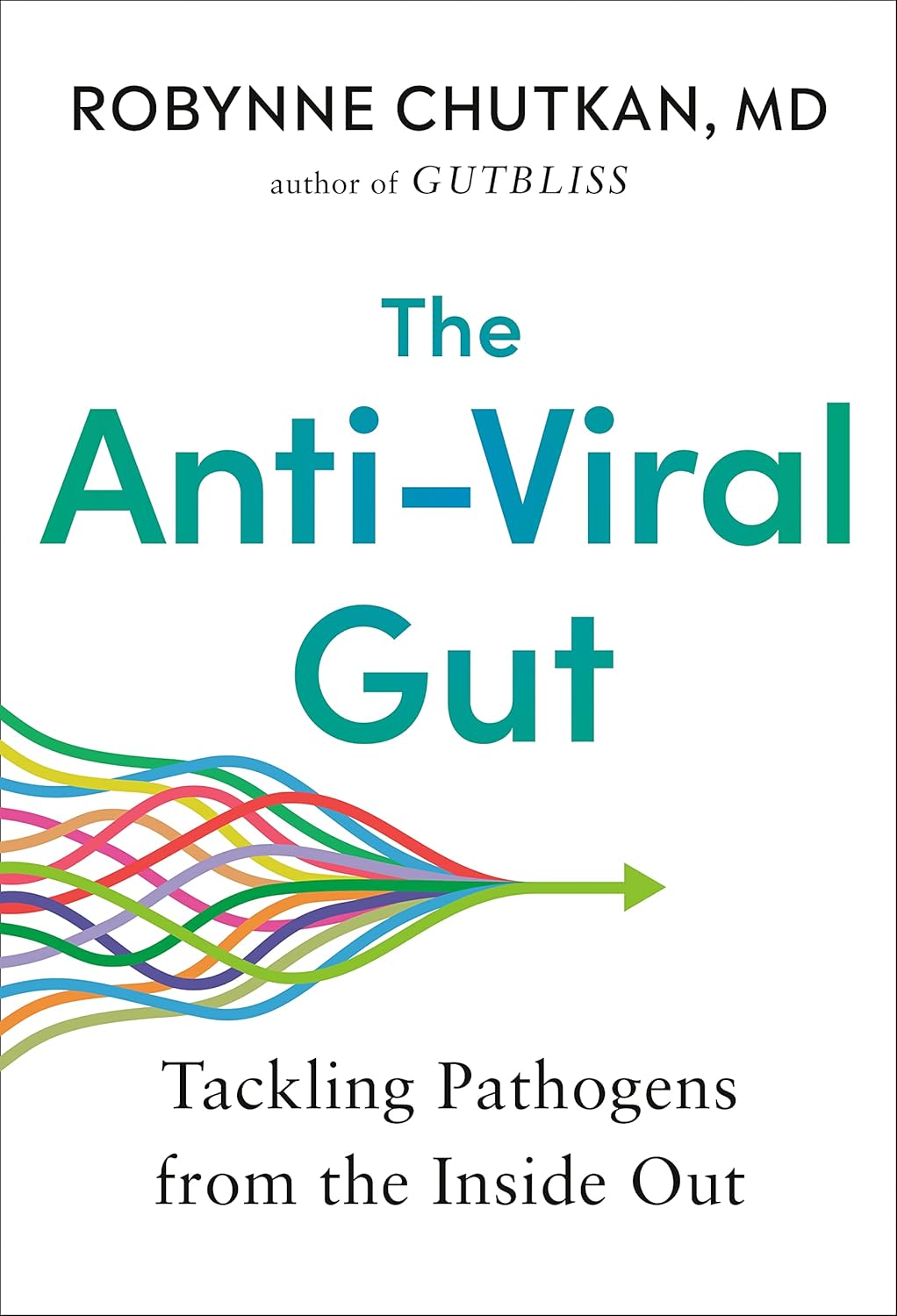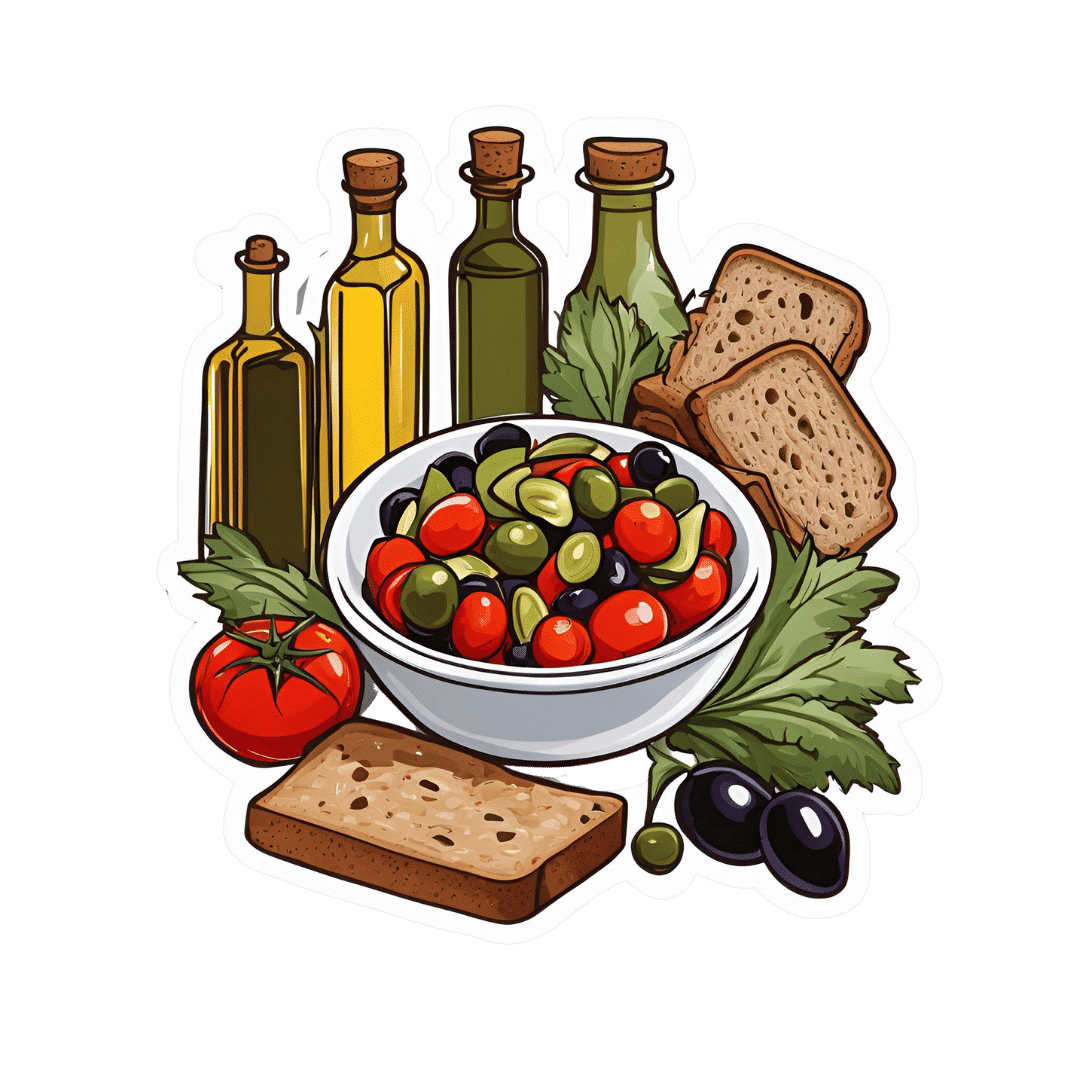
Antiviral Gum Gives Epidemiologists Something To Chew On
10almonds is reader-supported. We may, at no cost to you, receive a portion of sales if you purchase a product through a link in this article.
With viruses on the rise, of course one of our biggest weapons against them is vaccination, but that approach has its limitations:
- In some places such as the US, anti-vaccine sentiments are high, and a vaccine is only as good as its uptake (i.e. if people don’t take it, they will more likely catch the disease and pass it on, including to some people who cannot be vaccinated, so non-vaccinators create a hole in herd immunity)
- Many vaccines can become outdated when viruses mutate more quickly than vaccines can be developed (we’ve seen a lot of this with COVID and Flu viruses, and that’s why we keep needing new ones)
- There are some viruses for which we simply do not yet have vaccines; sometimes this is the case even for very common viruses like Herpes simplex. or, indeed, the common cold (Rhinovirus sp.).
So, antivirals definitely have their place too. To be clear about the difference:
- A vaccine forewarns the immune system “watch out for this thing that you might encounter in the future, and prepare a defense for it according to these specifications” (it only helps if you aren’t already infected with the thing it’s vaccinating against, because otherwise the warning is too late and your body is already trying to mount a defense)
- An antiviral kills, inactivates, or otherwise severely inconveniences the virus directly (it only helps if there is a virus there to fight)
How the antiviral gum works
In few words: you chew it, the antiviral substance is then in your saliva, and it kills/inactivates/inconveniences the virus at the site of infection (e.g. your respiratory tract)
In the case of this specific antiviral gum, it’s more in the category of “severely inconveniences”, because the antiviral substance is a protein trap that binds to the virus, rendering it near-harmless.
In essence, therefore, it works less like a vaccine and more like a facemask (except it’s trapping the virus on the molecular level, rather than trying to stop aerosolized droplets from moving around on the macro level).
This was first developed as a possible tool against COVID:
…and this in turn was based on previous work quite early in 2020:
And yes, those are lablab beans, as in Lablab purpureus, also called hyacinth beans, which may not be available in all supermarkets, but are not very obscure either (common throughout most of Africa and the tropics).
Most recently, researchers have found that 40mg of the broad-spectrum (as in, it affects many viruses) antiviral trap protein, as delivered by a 2g piece of gum, was sufficient to reduce viral loads by more than 95%, including for SARS-CoV-2 as well as H5N1, H3N2, and H7N9 (various kinds of bird flu that affect humans), and HSV-1 and HSV-2 (the two most common variants of herpes, including cold sores):
You can also read a pop-science article about it, with links to more details, here:
Antiviral chewing gum shows promise in reducing influenza and herpes spread
Want to learn more?
Check out:
Winning The Biological Arms Race: Could This Be “The Ultimate Booster”?
Take care!
Don’t Forget…
Did you arrive here from our newsletter? Don’t forget to return to the email to continue learning!
Recommended
Learn to Age Gracefully
Join the 98k+ American women taking control of their health & aging with our 100% free (and fun!) daily emails:
-
The Anti-Viral Gut – by Dr. Robynne Chutkan
10almonds is reader-supported. We may, at no cost to you, receive a portion of sales if you purchase a product through a link in this article.
Some people get a virus and feel terrible for a few days; other people get the same virus and die. Then there are some who never even get it at all despite being in close proximity with the other two. So, what’s the difference?
Dr. Robynne Chutkan outlines the case for the difference not being in the virus, but in the people. And nor is it a matter of mysterious fate, but rather, a matter of the different levels of defenses (or lack thereof) that we each have.
The key, she explains, is in our microbiome, and the specific steps to make sure that ours is optimized and ready to protect us. The book goes beyond “eat prebiotics and probiotics”, though, and goes through other modifiable factors, based on data from this pandemic and the last one a hundred years ago. We also learn about the many different kinds of bacteria that live in our various body parts (internal and external), because as it turns out, our gut microbiome (however important; hence the title) isn’t the only relevant microbiome when it comes to whether or not a given disease will take hold or be eaten alive on the way in.
The style is very polished—Dr. Chutkan is an excellent educator who makes her points clearly and comprehensibly without skimping on scientific detail.
Bottom line: if you’d like your chances of surviving any given virus season to not be left to chance, then this is a must-read book.
Click here to check out The Anti-Viral Gut, and make your body a fortress!
Share This Post
-
Cacao vs Carob – Which is Healthier?
10almonds is reader-supported. We may, at no cost to you, receive a portion of sales if you purchase a product through a link in this article.
Our Verdict
When comparing cacao to carob, we picked the cacao.
Why?
It’s close, and may depend a little on your priorities!
In terms of macros, the cacao has more protein and fat, while the carob has more carbohydrates, mostly sugar. Since people will not generally eat this by the spoonful, and will instead either make drinks or cook with it, we can’t speak for the glycemic index or general health impact of the sugars. As for the fats, on the one hand the cacao does contain saturated fat; on the other, this merely means that different saturated fat will usually be added to the carob if making something with it. Still, slight win for the carob on the fat front. Protein, of course, is entirely in cacao’s favor.
In the category of vitamins and minerals, they’re about equal on vitamins, while cacao wins easily on the mineral front, boasting more copper, iron, magnesium, manganese, and phosphorus.
While both have a generous antioxidant content, this one’s another win for cacao, with about 3x the active polyphenols and flavonoids.
In short: both are good, consumed in moderation and before adding unhealthy extra ingredients—but we say cacao comes out the winner.
If you’re looking specifically for the above-depicted products, by the way, here they are:
Want to learn more?
You might like to read:
- Enjoy Bitter Foods For Your Heart & Brain
- Chocolate & Health
- The Truth About Chocolate & Skin Health
Enjoy!
Share This Post
-
Gut Diversity vs Aging
10almonds is reader-supported. We may, at no cost to you, receive a portion of sales if you purchase a product through a link in this article.
…and other items from this week’s health news:
How A Diverse Gut Microbiome Can Make You Younger
It’s well-known (to regular 10almonds readers, at the very least) that gut microbiome diversity is broadly a very good thing for health. What’s good for the gut is good for the heart, and what’s good for the heart is good for the brain, and also the gut is in many ways a hugely influential factor in our immune system, which includes not just when it comes to fighting pathogens, but also when it comes to healthy immune regulation, i.e. against immune dysfunction and chronic inflammation, which latter is bad for pretty much everything.
However, a new study has found a link between gut health and aging; specifically, that the aging microbiome produces fewer metabolites that are needed for good health, resulting in a compounding effect of aging.
Most interestingly, however, this relation has found to be causal the other way around, that is to say, it’s not just “when older, the gut doesn’t work so well”, but rather, “when given a better gut microbiome, effects of aging are reversed”.
Caveat: this was a mouse study and it wasn’t all aspects of aging, but it was enough aspects of aging to be very worthy of note, and there’s no reason the same principles shouldn’t apply in humans:
Read in full: Metabolic modeling reveals aging microbiome produces fewer vital substances
Related: Stop Sabotaging Your Gut
Maybe you can drink some calories, after all (if you do this with them)
“Don’t drink your calories” is generally good advice; liquids are typically absorbed much more quickly than solids (increasing total caloric consumption, as well as the initial shock to the metabolism), and most sugary drinks (which absolutely includes pure fruit juice, by the way, as it has been stripped of fiber in the juicing process) produce an impressive spike in blood sugars, and thus insulin levels (both are bad things to spike).
However, smoothies do better than juices, due to still having fiber in them. And, research has found, smoothies with seeds in flatten the blood sugar curve even more, likely due to the combination of fiber and fats:
Read in full: Smoothies with seeds may improve glycemic control, study shows
Related: 3 Day Juice Fasting? Not So Fast! ← why you should absolutely not expect the same results from juices
Where there’s smoke, there’s… An increase in mental health conditions?
Wildfires have been raging in some parts of the US lately, and needless to say, these aren’t great for the health. As well as the initial most obvious risks, there are a lot of follow-up risks (including weakened immune systems as well as increased presence of pathogens in the air; people think of smoke as purifying, but it’s not, it’s mostly just hot air bringing germs with it), and, by the numbers, a large increase in hospital visits for mental health conditions including depression, anxiety, and mood disorders:
Read in full: Exposure to wildfire smoke linked to worsening mental health conditions
Related: The Dangers Of Fires, Floods, & Having Your Hair Washed
Take care!
Share This Post
Related Posts
-
What Size Breakfast Is Best, By Science?
10almonds is reader-supported. We may, at no cost to you, receive a portion of sales if you purchase a product through a link in this article.
“Breakfast is the most important meal of the day”, the popular wisdom goes. But, what should it consist of, and how much should we be eating for breakfast?
It has been previously established that it is good if breakfast is the largest meal of the day:
…with meals getting progressively smaller thereafter.
Of course, very many people do the inverse: small (or skipped) breakfast, moderate lunch, larger dinner. This, however, is probably more a result of when eating fits around the modern industrialized workday (and thus gets normalized), rather than actual health considerations.
So, what’s the latest science?
A plucky band of researchers led by Dr. Karla-Alejandra Pérez-Vega investigated the importance of breakfast in the context of heart health. This research was done as part of a larger study into the effects of the Mediterranean Diet on cardiovascular health, so if anyone wants a quick recap before we carry on, then:
The Mediterranean Diet: What Is It Good For? ← the answer, by the way, is “pretty much everything”
…and there are also different versions that each use the Mediterranean Diet as the core, while focussing extra on a different area of health, including one to make it extra heart-healthy:
Four Ways To Upgrade The Mediterranean ← most anti-inflammatory / gut-healthiest / heart-healthiest / brain-healthiest
What they found
In their sample population (n=383) of Spanish adults aged 55–75 with pre-diagnosed metabolic syndrome who, as part of the intervention of this 36-month interventional study, had now for the past 36 months been on a Mediterranean diet but without specific guidance on portion sizes:
- Participants with insufficient breakfast energy intake had the highest adiposity (which is a measure of body fat expressed as a percentage of total mass)
- Participants with low or high (but not moderate) breakfast energy intake had the larger BMI and waist circumference over time
- Participants with low or high (but not moderate) breakfast energy intake had higher triglyceride and lower HDL (good) cholesterol levels
- Participants who consumed 20–30% of their daily calories at breakfast enjoyed the greatest improvements in lipid profiles, with lower triglycerides and higher HDL (good) cholesterol levels
- Participants with lower breakfast quality (lower adherence to Mediterranean Diet) had higher blood pressure levels
- Participants with lower breakfast quality (lower adherence to Mediterranean Diet) had higher blood sugar levels
- Participants with lower breakfast quality (lower adherence to Mediterranean Diet) had lower estimated glomerular filtration rate (which is an indicator of kidney function)
- Participants with higher breakfast quality (higher adherence to Mediterranean Diet) had lower waist circumference, higher HDL cholesterol, and better kidney function
You can see the paper itself here in the Journal of Nutrition, Health, and Aging:
What this means
According to this research, the heart-healthiest breakfast is:
- not skipped
- Mediterranean Diet adherent
- within the range of of 20–30% of the total calories for the day
Want to make it even better?
Consider:
Before You Eat Breakfast: 3 Surprising Facts About Intermittent Fasting
Enjoy!
Don’t Forget…
Did you arrive here from our newsletter? Don’t forget to return to the email to continue learning!
Learn to Age Gracefully
Join the 98k+ American women taking control of their health & aging with our 100% free (and fun!) daily emails:
-
10 Mistakes To Sabotage Your Ozempic Progress
10almonds is reader-supported. We may, at no cost to you, receive a portion of sales if you purchase a product through a link in this article.
Ozempic has a good reputation for getting reliable results, but there are ways to mess it up:
It’s not just inject-and-go
We’ll not keep the 10 ways a secret; they are:
- Increasing the dose too quickly: avoid cranking doses up too high too quickly, to prevent severe nausea, appetite suppression, and muscle loss. It’s worth being aware that high doses without proper management can lead to metabolic health disasters.
- Pushing through side effects: severe nausea or vomiting means you probably have an unhelpfully high dose; consult your prescribing doctor—it’s easy to feel “more is better; I don’t want to have less!”, but there really is a sweet spot, and if you’re not in it, then adjustments are needed in order to find it.
- Eating nutritionally scant food: reducing the quantity of unhealthy food isn’t enough—please prioritize nutrient-rich foods instead. Remember, “it’s not the calories in your food; it’s the food in your calories”.
- Consuming fried food and refined carbs: their general metabolic woes aside, fried foods and ultra-refined carbs can exacerbate nausea and other side effects, so it really is best to skip them. The good news is that Ozempic will help overcome those cravings more easily.
- Neglecting muscle protection: especially women, especially middle-aged or older, are at higher risk of osteoporosis and should maintain muscle mass (strong muscles and strong bones go together, by necessity). So, eat protein and do resistance training!
- Assuming it’s a monotherapy: GLP-1 drugs work best as part of a holistic protocol, including proper nutrition, strength training, and hormone therapy if appropriate.
- Not addressing metabolic health first: GLP-1 drugs are less effective in people with poor baseline metabolic health, so there’s a bit of a catch-22 here, but it’s important to be aware of. Fortunately, Ozempic and adopting a healthy lifestyle will each make the other work better.
- Neglecting comprehensive treatment plans: in other words, going through the motions of a holistic protocol and then expecting Ozempic to do all the work.
- Upping doses to overcome plateaus: plateaus often signal other issues (e.g. lack of protein, no strength training), so do address these before increasing dosage.
- Lack of collaboration with doctors: the human body is complex, and what’s going on metabolically is complex too, so there’s a lot a layperson can easily miss. For that matter, there’s a lot that doctors can easily miss too, but more heads are better than one.
For more on all of these, enjoy:
Click Here If The Embedded Video Doesn’t Load Automatically!
Want to learn more?
You might also like:
5 Ways To Naturally Boost The Ozempic Effect
Take care!
Don’t Forget…
Did you arrive here from our newsletter? Don’t forget to return to the email to continue learning!
Learn to Age Gracefully
Join the 98k+ American women taking control of their health & aging with our 100% free (and fun!) daily emails:
-
Cabbage vs Carrots – Which is Healthier?
10almonds is reader-supported. We may, at no cost to you, receive a portion of sales if you purchase a product through a link in this article.
Our Verdict
When comparing cabbage to carrots, we picked the carrots.
Why?
Both are top-tier vegetables! But as the Highlander said, “there can be only one”, and we say carrots get a marginal victory;
In terms of macros, nominally cabbage has slightly more protein (but it’s a tiny amount, and thus an even tinier difference) while carrots have slightly more fiber and carbs (but again, not big differences), as well as the lower glycemic index (but nobody is getting metabolic disease from eating cabbage). We could call this category a tie because it’s all so close, but by the numbers, it’s a slender victory for carrots.
In the category of vitamins, carrots have more of vitamins A, B1, B2, B3, B5, B6, and E, while cabbage has more of vitamins B9, C, K, and choline. Thus, a win for carrots, especially as carrots’ vitamin A is 167x what cabbage has.
When it comes to minerals, cabbage has more calcium, iron, manganese, and selenium, while carrots have more copper, phosphorus, potassium, and zinc. They’re both equal on magnesium, and their respective margins of difference for the other minerals were not big, so this round’s a clear tie.
Adding up the sections makes for an overall win for carrots, but by all means enjoy either or both (together, even, if you like!); diversity is good!
Want to learn more?
You might like:
12 Most Powerful Supplements and Foods to Increase Energy & Slow Down Aging
Enjoy!
Don’t Forget…
Did you arrive here from our newsletter? Don’t forget to return to the email to continue learning!
Learn to Age Gracefully
Join the 98k+ American women taking control of their health & aging with our 100% free (and fun!) daily emails:







